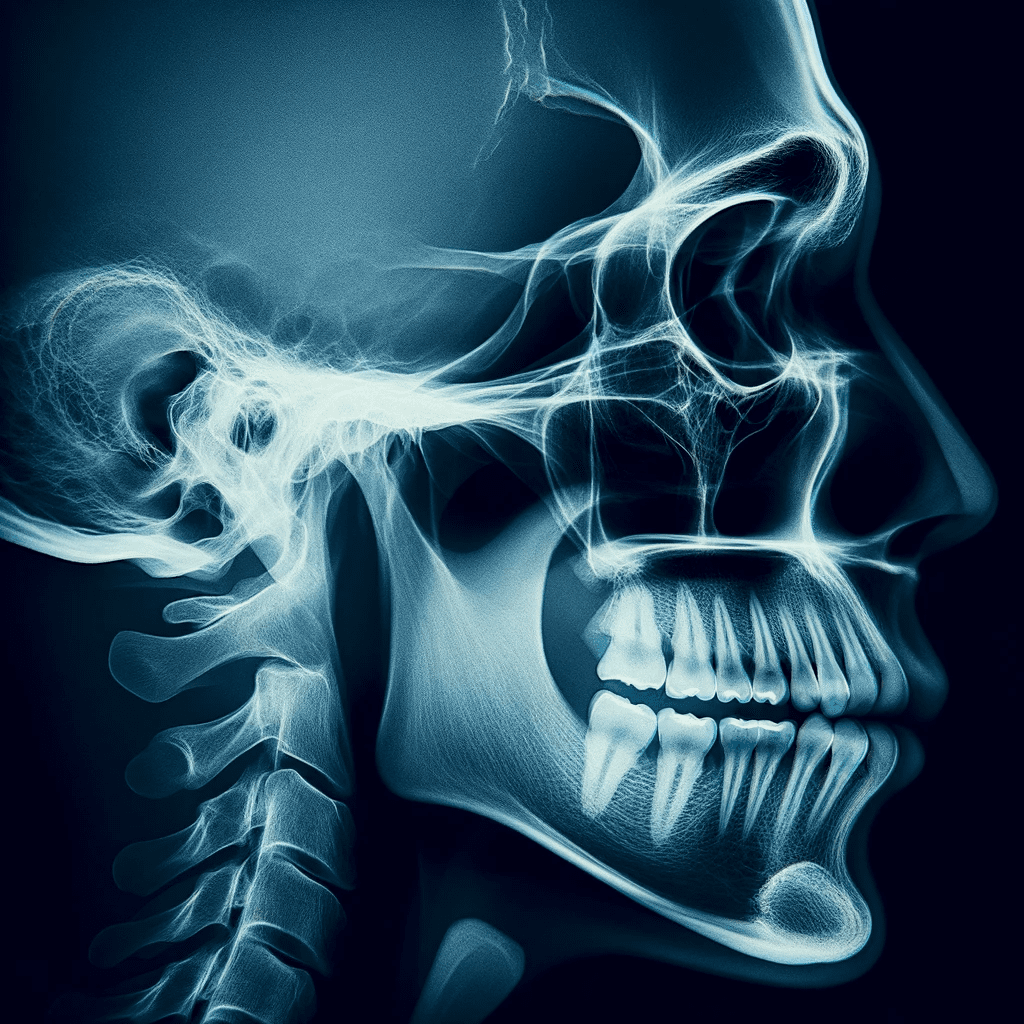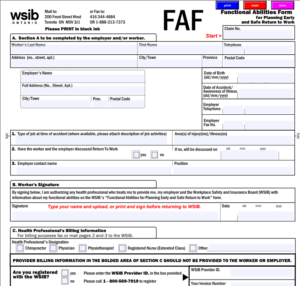Welcome to our comprehensive guide on Independent Medical Examinations (IMEs) and their significance in motor vehicle accident cases involving facial injuries.
In this article, we will explore the importance of IMEs in these specific cases and provide valuable insights for insurance companies, legal firms, and employers.
By understanding how IMEs assess the extent and severity of facial injuries, evaluate the physical and mental health impact, and aid in insurance settlements, litigation, and workers’ compensation claims, readers will gain a comprehensive understanding of the vital role IMEs play.
Whether you are an insurance professional, legal expert, or employer, this guide aims to provide you with valuable information and resources on IMEs in motor vehicle accident facial injury cases.
Understanding Independent Medical Evaluations in Motor Vehicle Accident Cases
Definition and Purpose of IMEs
Independent Medical Examinations (IMEs) are medical evaluations conducted by qualified and unbiased healthcare professionals. These professionals are not involved in the injured party’s treatment. IMEs are essential in motor vehicle accident cases that involve facial injuries. The purpose of an IME is to provide an independent assessment of the extent and severity of facial injuries sustained in a motor vehicle accident. This assessment considers both the physical and mental health aspects of the injuries.
Importance of IMEs in Determining Facial Injury Severity
IMEs play a crucial role in accurately determining the extent and severity of facial injuries in motor vehicle accident cases. These examinations provide objective medical opinions that help establish the impact of the accident on the victim’s face. They consider fractures, lacerations, burns, and other traumatic injuries. By assessing the physical condition of the injured party, IMEs validate the injuries and provide essential information for insurance claims, legal proceedings, and workplace adjustments.
Role of IMEs in Assessing Physical and Mental Health Impact
IMEs go beyond evaluating physical appearances and focus on assessing the true impact of facial injuries on an individual’s overall well-being. They consider the psychological and emotional consequences of these injuries on the injured party’s mental health. Understanding the long-term effects of facial injuries is crucial in determining appropriate treatment plans, accommodations, and potential compensation needed for the victim’s overall recovery.
Reliability and Objectivity of IMEs in Legal Proceedings
IMEs hold significant weight in legal proceedings related to motor vehicle accident cases. These independent evaluations are conducted by experts who have no vested interest in the outcome of the case. As neutral and objective witnesses, IMEs provide unbiased medical assessments that can be relied upon by both plaintiffs and defendants in presenting their arguments. They offer an impartial perspective that ensures fairness and accuracy in determining the extent of facial injuries and the resulting financial and legal implications.
Process of IMEs in Facial Injury Cases
In cases involving motor vehicle accidents and facial injuries, the process of conducting Independent Medical Examinations (IMEs) plays a vital role in determining the severity and extent of the injuries. This section provides an overview of the IME process, outlining the important steps and considerations involved.
Selection and Qualification of Independent Medical Examiners
The first step in the IME process is selecting a qualified and experienced independent medical examiner who specializes in facial injuries caused by motor vehicle accidents. It is crucial to choose an examiner with the necessary expertise, qualifications, and reputation. Their knowledge and experience should align with the specific type of facial injury under investigation.
Gathering of Medical Records, Examinations, Diagnostic Tests, and Documentation
Before conducting the IME, the examiner must gather all relevant medical records, including hospital reports, diagnostic tests, and records of previous treatments related to the facial injury. This information is essential for the examiner to understand the injury’s history, progression, and any pre-existing conditions that could impact the treatment and recovery process.
Physical and Psychological Evaluations Conducted During IMEs
During the IME, the examiner will conduct comprehensive physical and psychological evaluations to assess the impact of the facial injury on the accident victim. The physical evaluation may include examining the range of motion, visible scars or abnormalities, and the functionality of facial features. The psychological evaluation aims to identify any emotional or psychological distress resulting from the injury. This integrated approach provides the examiner with a holistic understanding of the victim’s condition and its implications.
Reporting and Documentation Procedures Following the IMEs
After completing the IME, the examiner will prepare a detailed report documenting their findings. This report includes a comprehensive analysis of the facial injury, its effect on the victim’s physical and mental health, and any recommended treatments or accommodations. The report serves as crucial evidence in legal proceedings and insurance claims, providing an objective assessment of the injuries and their consequences.
The Importance of IMEs for Insurance Companies
Evaluating the Validity and Severity of Facial Injury Claims
Insurance companies play a crucial role in motor vehicle accident cases involving facial injuries. Independent Medical Examinations (IMEs) are an invaluable tool for insurers to accurately assess the validity and severity of these claims.
Assessing Validity
IMEs help insurance companies determine the validity of facial injury claims by providing an objective assessment of the injuries. Independent medical examiners thoroughly examine the claimant’s medical history, symptoms, and reported injuries to identify any inconsistencies or discrepancies. This enables insurers to objectively evaluate the credibility of the claim and make well-informed decisions regarding settlement.
Determining Severity
IMEs also assist insurance companies in evaluating the severity of facial injuries caused by motor vehicle accidents. With their expertise in the field, independent medical examiners can accurately assess the extent of injuries, including fractures, lacerations, disfigurement, and damage to sensory organs. This information is crucial for insurance companies to calculate the appropriate amount of compensation necessary to fully address the claimant’s injuries.
Preventing Fraudulent or Exaggerated Injury Claims
Insurance fraud poses a significant risk for insurance companies, and facial injury claims resulting from motor vehicle accidents are not exempt from this threat. IMEs play a pivotal role in preventing fraudulent or exaggerated injury claims.
Identifying Red Flags
IMEs allow independent medical examiners to thoroughly evaluate the claimant’s medical records, conduct physical examinations, and review diagnostic tests. This comprehensive process helps detect any inconsistencies or red flags that may indicate fraudulent or exaggerated claims. By relying on expert opinions and objective assessments, insurance companies can effectively filter out false claims and protect themselves from financial losses.
Objective Assessments
IMEs provide insurance companies with impartial evaluations of the claimant’s injuries. Independent medical examiners are trained to assess the medical evidence objectively and provide detailed reports outlining their findings. These reports serve as valuable evidence in litigation or settlement negotiations, ensuring that insurance companies have credible information to make fair and accurate decisions.
Impact on Insurance Settlements and Claims Processing
IMEs have a significant impact on insurance settlements and the overall claims processing for motor vehicle accident cases involving facial injuries.
Negotiating Settlements
IME reports serve as critical evidence during settlement negotiations. Insurance companies can leverage the expert opinions and objective assessments provided by independent medical examiners to strengthen their stance on the validity and severity of facial injuries. This evidence plays a vital role in reaching fair and reasonable settlement agreements that adequately compensate the claimant for their injuries.
Expedited Claims Processing
IMEs help streamline the claims processing process for insurance companies. Through thorough evaluations of the claimant’s injuries, independent medical examiners provide insurance companies with a comprehensive understanding of the case. This allows insurers to process claims more efficiently, reducing the overall time spent on investigations and ensuring timely resolutions for all parties involved.
Legal Perspective on IMEs in Facial Injury Cases
Strengthening Legal Cases with IMEs in Facial Injury Litigation
Independent Medical Examinations (IMEs) play a crucial role in strengthening legal cases for clients involved in facial injury litigation resulting from motor vehicle accidents. IMEs provide an unbiased and objective assessment of the injuries sustained by accident victims, which can substantiate their claims and support legal arguments.
IMEs help legal firms obtain a comprehensive evaluation of the extent and severity of facial injuries caused by motor vehicle accidents. This evaluation allows lawyers to build a strong case by presenting compelling evidence to establish the opposing party’s negligence or fault. The detailed medical reports generated from IMEs provide valuable information about the specific injuries sustained, necessary treatment procedures, and the expected recovery timeline.
Expert Testimony and the Credibility of IMEs in Court Proceedings:
In court proceedings, the expert testimony provided by independent medical examiners holds significant weight. These experts possess specialized knowledge and experience in assessing the impact of motor vehicle accidents on facial injuries. Their testimony can greatly influence the outcome of the case by providing an authoritative opinion on the causation, extent, and long-term consequences of the injuries.
The credibility of IMEs in court proceedings stems from the impartiality and objectivity of the examiners. Their assessments are based on a thorough examination of the medical records, diagnostic tests, physical evaluations, and psychological assessments. This objective approach enhances the trustworthiness of the IME reports, making them valuable evidence for the legal arguments presented by the plaintiffs or defendants.
Admissibility of IME Reports as Evidence and their Weight in Legal Arguments
IME reports are generally admissible as evidence in legal proceedings. Courts recognize the significance of IMEs in providing an independent assessment of the injuries and their impact on accident victims. The reports are considered reliable and relevant due to the expertise of the examining medical professionals.
The weight given to IME reports in legal arguments depends on various factors, including the qualifications and reputation of the examiner, the thoroughness and accuracy of the evaluation, and the alignment of the findings with other medical evidence presented in the case. Courts typically consider the methodology, soundness, and consistency of the IME reports when determining their probative value.
Legal firms rely on the insights provided by IMEs to present a compelling case that establishes the causal link between the motor vehicle accident and the facial injuries. The objective and unbiased assessment conducted during the IMEs helps substantiate the damages claimed by their clients and seek the appropriate compensation.
IMEs and Employers’ Role in Motor Vehicle Accident Facial Injury Cases
Understanding Employers’ Responsibilities:
- Employers have a duty to prioritize the safety and well-being of their employees.
- It is important for employers to understand how facial injuries can affect an employee’s ability to perform their job duties.
How IMEs Aid Employers:
- Help employers assess the extent and limitations of facial injuries and how they impact job performance.
- Help identify necessary accommodations and workplace adjustments to support an employee’s recovery.
- Ensure compliance with legal obligations, such as providing reasonable accommodations under disability laws.
Collaborating with Medical Experts and IMEs:
- Employers should work closely with independent medical examiners to understand the nature and prognosis of facial injuries.
- Seeking expert opinion helps employers determine if an employee can continue in their current role or if temporary or permanent job modifications are necessary.
- Objective medical information obtained through IMEs enables informed decisions regarding an employee’s return to work and ability to perform certain tasks.
Determining Liability and Workers’ Compensation Claims:
- Useful in determining the connection between motor vehicle accidents and an employee’s facial injuries.
- Establish liability in cases where the accident occurred during work-related activities.
- Support workers’ compensation claims by providing medical evidence of the employee’s injuries and their impact on their ability to work.
Employee Support and Rehabilitation:
- IME recommendations guide rehabilitation programs and promote the employee’s recovery process.
- Collaboration with healthcare professionals and insurers ensures appropriate medical treatment and support services are provided.
- The goal is to facilitate a smooth and successful return-to-work process while prioritizing the employee’s health and well-being.
Minimizing Legal Risks:
- Employers must act in accordance with legal requirements and comply with workers’ compensation laws.
- Demonstration of a commitment to employee safety minimizes the risk of legal action.
- IME reports can help address disputes or disagreements regarding an employee’s ability to work and entitlement to benefits.
Conclusion
This comprehensive guide has illuminated the crucial role of Independent Medical Examinations (IMEs) in motor vehicle accident cases involving facial injuries.
IMEs serve as a vital tool for assessing the extent and severity of injuries, determining their impact on physical and mental health, and providing objective and reliable evidence in legal proceedings.
- Insurance companies rely on IMEs to evaluate the validity of claims and safeguard against fraudulent activities.
- Legal firms leverage IME reports to construct strong cases for their clients.
- Employers can benefit from IMEs by understanding the implications of facial injuries on job performance and making necessary workplace adjustments.
By offering valuable insights and resources, this guide serves as an invaluable reference for individuals seeking a comprehensive understanding of IMEs in motor vehicle accident cases involving facial injuries.
Further Considerations
1) Objective assessment of injuries: One challenge in IMEs for motor vehicle facial injury cases is the need for an objective assessment of the injuries. Since facial injuries can be complex and varied, it is crucial to have a thorough and accurate evaluation that covers all the aspects of the injury. This requires expertise from medical professionals who specialize in facial injuries and have experience in IMEs.
2) Determining causation: Another unique challenge in IMEs for motor vehicle facial injury cases is determining the causation of the injuries. Facial injuries can occur due to various factors in motor vehicle accidents such as direct impact, airbags, seat belts, or even glass shards from shattered windshields. It is important for the IME to accurately determine the causation to correctly assess liability and provide a fair evaluation.
3) Understanding pre-existing conditions: Facial injuries can be complicated by pre-existing conditions or prior injuries. It can be challenging for the IME to differentiate between the effects of the motor vehicle accident and any pre-existing condition. Medical professionals conducting the IME need to have expertise in recognizing and evaluating pre-existing conditions, which can add complexity to the assessment process.
4) Psychological impact: Facial injuries can have significant psychological impact on the individual involved in the motor vehicle accident. This includes effects on self-esteem, body image, and mental health. It is essential for the IME to take into account the psychological impact of the facial injury and consider the necessary treatment or therapy required to address these issues.
5) Long-term implications: Facial injuries can often have long-term implications, including scarring, functional impairments, or even disfigurement. IMEs need to consider not only the immediate effects of the injury but also the long-term implications for the individual’s quality of life, future medical needs, and potential financial compensation. This requires careful evaluation and consideration of all the potential long-term effects of the facial injury.
FAQs About IMEs for Motor Vehicle Facial Injury Cases
What is the cost of an Independent Medical Examination for motor vehicle facial injury cases?
– The cost of an IME can vary depending on factors such as the expertise of the examiner and the location. It is typically covered by the party requesting the examination, such as the insurance company or legal firm.
Can a physician refuse to conduct an Independent Medical Examination for a facial injury case if they have a conflict of interest?
– Yes, physicians are expected to maintain objectivity and can refuse to conduct an IME if they have a conflict of interest that may compromise their ability to provide an unbiased assessment.
Are IME reports always admissible as evidence in court proceedings?
– The admissibility of IME reports as evidence in court proceedings may vary depending on the jurisdiction and specific circumstances of the case. It is advisable to consult with legal professionals regarding the specific rules and regulations in your jurisdiction.
Can the accident victim choose their own independent medical examiner?
– In some cases, the accident victim may have the opportunity to suggest an independent medical examiner for their IME. However, the final selection is typically made by the party requesting the examination.
Will the results of an IME conclusively determine the outcome of a legal case or insurance claim?
– While the results of an IME carry significant weight, they are not the sole factor determining the outcome of a legal case or insurance claim. They are considered alongside other evidence and arguments presented during the proceedings.
How long does an Independent Medical Examination for a facial injury case typically take?
– The duration of an IME for a facial injury case can vary depending on the extent of the injuries, complexity of the case, and the specific examinations and tests required. It can range from a few hours to multiple days.
Can an IME be challenged or contested by the accident victim or their legal representative?
– Yes, an IME report can be challenged or contested by the accident victim or their legal representative if they believe there are inaccuracies, biases, or procedural errors in the examination or report.
Are IMEs only conducted for severe facial injuries, or can they also be used for minor injuries?
– IMEs can be conducted for both severe and minor facial injuries. The purpose is to provide an independent evaluation of the medical condition and its impact, regardless of the severity.
Are IMEs conducted by a panel of doctors or a single examiner?
– IMEs are typically conducted by a single examiner who is qualified and experienced in the relevant field of medicine. However, in some cases, a panel of experts may be involved for a more comprehensive evaluation.
Can an accident victim refuse to undergo an Independent Medical Examination?
– In some cases, an accident victim may have the right to refuse to undergo an IME. However, depending on the jurisdiction and the specific circumstances of the case, this refusal may have consequences such as potential impact on their claim or legal proceedings.
Glossary of Terms Used in the Article
1. Independent Medical Examinations (IMEs): Assessments conducted by unbiased medical professionals to evaluate the extent and severity of injuries in legal cases.
2. Motor Vehicle Accident: A collision involving automobiles, often resulting in injuries.
3. Facial Injuries: Harm caused to the face, including fractures, lacerations, burns, or disfigurement.
4. Insurance Companies: Organizations that provide financial coverage for various risks, including motor vehicle accidents, through insurance policies.
5. Legal Firms: Law practices specializing in providing legal advice and representation in legal matters, including motor vehicle accident cases.
6. Employers: Individuals or organizations that hire and provide employment to individuals.
7. Severity of Injuries: The extent and seriousness of harm or damage sustained by an individual.
8. Physical and Mental Health: The overall well-being of an individual concerning their bodily health and mental state.
9. Objectivity: The quality of being impartial and unbiased when evaluating or assessing a situation.
10. Selection and Qualification: The process of choosing and ensuring the competence and expertise of a professional.
11. Medical Records: Documentation of an individual’s medical history, including previous injuries, diagnoses, and treatments.
12. Diagnostic Tests: Procedures or examinations performed to determine the nature and extent of a medical condition or injury.
13. Documentation: The act of recording and preserving information, findings, and observations related to a specific case.
14. Fraudulent Claims: False or exaggerated statements made to obtain insurance benefits or compensation.
15. Settlements: Agreements reached between parties involved in a legal dispute to resolve the matter without going to court.
16. Claims Processing: The steps involved in administering and evaluating insurance claims for compensation or benefits.
17. Litigation: The process of resolving disputes through a court system.
18. Expert Testimony: Opinions provided by qualified professionals in their field to assist in legal proceedings.
19. Admissibility: The acceptability of evidence or information in a courtroom or legal proceeding.
20. Workers’ Compensation: Financial benefits provided to employees who are injured or become ill on the job.






